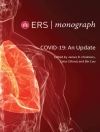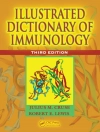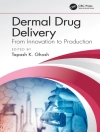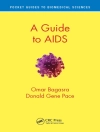This book aims to highlight the importance of the development of health conditions and demand for the application of noninvasive mechanical ventilation (NIMV) outside the intensive care units (ICUs); the diversification of possible scenarios outside the ICUs; the need to establish references that consolidate this phenomenon and the healthcare organizations models.
In the last decades the extension of the use of NIMV outside of the ICUs has led to the generation of protocols and to the creation of new in-hospital care models. In this field, the main determining factors are a better knowledge of technique, technological advancement, better monitoring capacity, the creation of multidisciplinary teams adequately trained in their application, and social and health events that have overloaded ICUs. All these elements have promoted the creation of these NIMV units outside ICUs. This new reality entails the need for clarification of concepts, recommendations, and analysis of how to plan NIMV.
Although the literature that clearly determine the indications and aids on the use of NIMV is considerable, this volume, pointing out the diversity of different healthcare models to define how to organize NIMV outside the ICUs, shed a light and bring a clear benefit to the scientific community involved.
The book is structured in eleven main sections analyzing the epidemiology and trends for NIMV healthcare models and determining factors for these models outside ICUs.
The originality of the work, its clear clinical-practical impact and the multidisciplinary approach given by all healthcare professionals involved (intensivists, pneumologists, internal medicine and emergency medicine specialists, geriatricians, chest respiratory therapists, etc.) is very relevant for the thoroughness of the book.Innehållsförteckning
Part 1. Epidemiology, Rationale Equipment, Monitoring and Noninvasive Ventilation Response Outside Intensive Care Unit.- Epidemiology.- Rationale.- Clinical indications and recommendations.- Part 2. Indications for Noninvasive Mechanical ventilation outside ICU.- Classification Respiratory failure – Hypercapnic – Hypoxemic.- Noninvasive mechanical ventilation in Do not intubation order.- Comorbidities.- Part 3-Equipment and options for noninvasive ventilation outside ICU.- Options noninvasive ventilator support (NIMV, nasal high flow oxygen).- Equipments for Noninvasive mechanical ventilation.- Part 4. Monitoring Noninvasive mechanical ventilation outside ICU.- Basic monitoring.- Telemonitoring.- Part 5. Response, complications, safety, supervision, and quality indicators for NIMV outside ICU.- Risk factors failure.- Complications and prevention.- Safety recommendations.- Registration, supervision, and policies.- Quality indicators.- Part 6-Flow chart in noninvasive ventilation outside ICU.- Patients flow charts and models and NIMV: organization in hospital (pre- and beyond ICU).- Discharge planning’s from Intensive Care.- Prevention ICU-readmissions.- Part 7. Models of Noninvasive Mechanical Ventilation Units.- NIMV in the Emergency Room.- NIMV in Step Down units.- NIMV in High dependency Critical Units.- NIMV in Conventional Respiratory ward.- NIMV in Respiratory intermediate care units.- NIMV in Internal Medicine ward.- NIMV in the Perioperative medicine.- NIMV in the Endoscopic wards.- NIMV in Specialized Weaning.- NIMV in Geriatric wards.- NIMV in Hematology – Oncology departments.- NIMV Palliative care and End-stage’ NIMV in respiratory rehabilitation unit.- NIMV during intra-hospital transport.- Models of NIMV in Pandemics conditions.- Models of NIMV in Bioterrorism and other catastrophic conditions.- NIMV outside ICU in low-income countries.- Part 8. Respiratory Care, Education, Ethics and Cost of NIMV Outside Intensive Care Unit.- Chest physiotherapy.- Nutrition support.- Psychologic support.- Nurse Planning and family and caregivers support.- Part 9. Education, Ethics and Cost.- Education and accreditation recommendations for NIMV outside ICU.- Ethics and palliative aspects of NIMV outside ICU.- Cost determinants.- Part 10. Noninvasive Ventilation Outside Intensive Care Unit: Discharge Plan From Hospital To Home Care.- Hospital discharge planning for patients requiring NIMV support at home.- Role Respiratory technicians in discharge program from hospital to home.- Part 11. Outcome and Long Term Follow Up in NIMV Outside ICU.- Clinical determinants hospital outcome noninvasive ventilatory support outside ICU.- Long term follow up patients receiving home NIMV.
Om författaren
Antonio M. Esquinas, MD, Ph D, FCCP, FNIV, International fellow of the American Association for Respiratory Care (AARC), is a critical care specialist and staff physician at the Intensive Care Unit at the Hospital Morales Meseguer, Murcia, Spain. He is the Director of the International School of Noninvasive Mechanical Ventilation, International College of Experts in Noninvasive Ventilation, Director, Academy of Noninvasive Ventilation and Director International Noninvasive Ventilation Fellowship Program and President of International Association of Noninvasive Ventilation. His main research activities are related to noninvasive mechanical ventilation in pulmonary and critical care. Prof. Esquinas is the author of more than 670 scientific publications (402 on peer-reviewed journals), editor of 60 books (published in English, Portuguese, Spanish and Chinese) and author of 325 chapters of book/position paper. He was invited speaker at 356 presentations and presented 450 oral communicationsor posters at national and international congresses. He acts in international networking groups promoting education programs and research in noninvasive ventilation.
Lucia Spicuzza is Associate Professor of Respiratory Diseases at the Pneumology Unit AOUP “G. Rodolico – San Marco” of Catania. Research Fellow and Honorary Research Assistant at the National Heart & Lung Institute, Thoracic Medicine, Imperial College of London. Her main area of interests are: sleep medicine; control of breathing, hypoxic and hypercapnic ventilatory response; cardio-respiratory interaction; cardiovascular and autonomic nervous system control in sleep breathing disorders; ventilatory control in patients with heart failure; high altitude medicine and chronic mountain sickness, sleep disorders at high-altitudes; sleep disorders in cystic fibrosis; peadiatric sleep apnea; bronchial asthma and airway pharmacology in vitro and in vivo; adenosine and airways. Prof. Spicuzza is member of several scientific Societies such as the British Thoracic Society, the American College of Chest Physicians, Società Italiana di Medicina Respiratoria, Società italiana malattie respiratorie infantile and referee for the following journals: European Respiratory Journal, British Journal of Pharmacology, Chest, Am J Respir Crit Care Med, Monaldi Archives of Chest Diseases. She is also Author of several scientific papers published on peer-reviewed journals.
Raffaele Scala is the head of the pneumology unit of the S. Donato hospital in Arezzo. He graduated in medicine and surgery at the Federico II University of Naples and specialized in pulmonology. He is also teacher of Post-graduate School of Thoracic Surgery of Siena University. He is Editor in Chief of Italian Respiratory Journal since 2020, Section Editor for the section “Respiratory critical care” of BMC Pulmonary Medicine since 9-10-2014; Reviewer of Intensive Care Medicine, Lancet Respir Med, Chest, European Respiratory Journal; Author of 151 scientific publications (119 on peer-reviewed journals), editor of 2 books and author of 29 chapters of book / position paper; he was invited speaker at 384 presentations and presented 194 oral communications or posters at national and international congresses.












